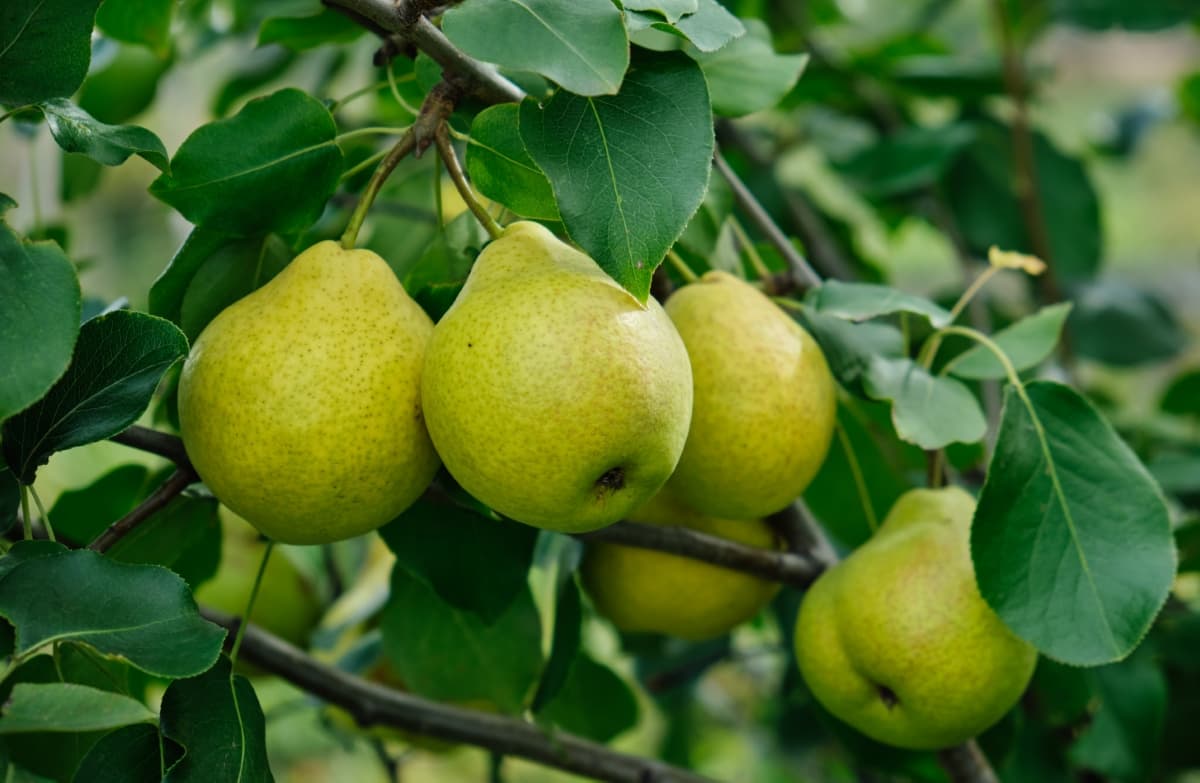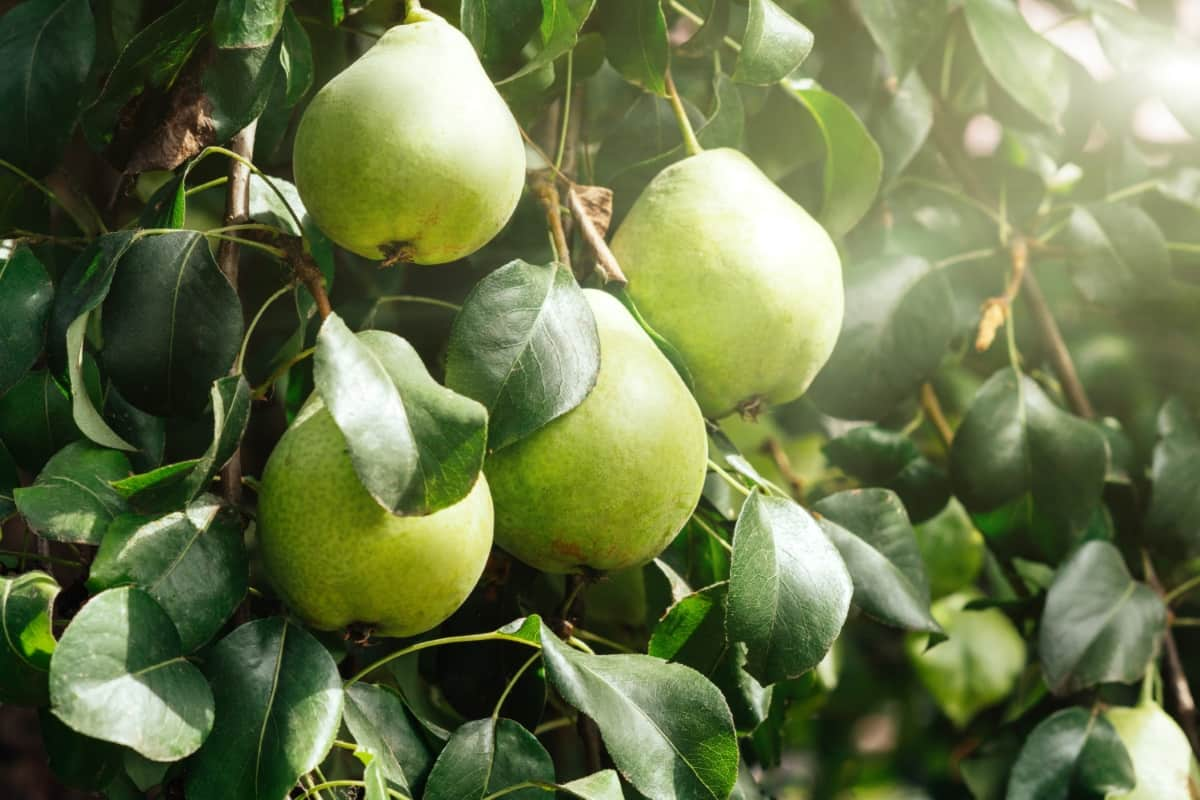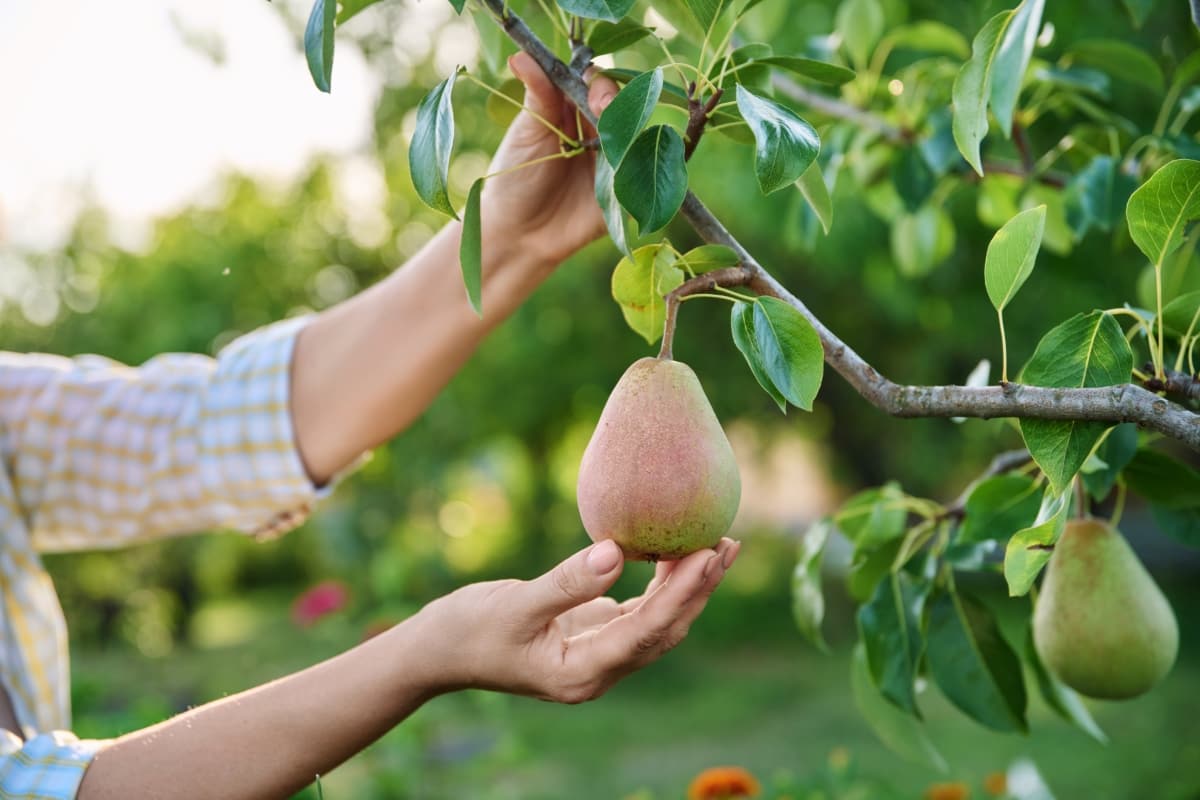Increasing pear fruit size requires careful attention to several factors during the growing season. Optimizing pear fruit growth involves a combination of proper tree care, nutrient management, irrigation, and pest control. This guide explores essential techniques to enhance pear fruit size, ensuring a bountiful harvest with larger and more flavorful pears.

How to Increase Pear Fruit Size
Essential Nutrients for Maximizing Pear Fruit Growth
Optimizing pear fruit size involves a strategic focus on essential nutrients that play a pivotal role in fostering robust growth. To achieve the desired outcomes, understanding the key components of pear nutrition for bigger fruits becomes imperative. Pear trees require a balanced supply of nutrients, including nitrogen, phosphorus, and potassium, to enhance fruit development.
Adequate nitrogen promotes leafy growth and contributes to overall tree vigor, while phosphorus supports root development and flowering. Potassium, crucial for fruit enlargement, aids in cell division and water uptake. Furthermore, micronutrients such as magnesium, zinc, and boron contribute to optimal pear fruit size enhancement. Implementing a well-rounded fertilization strategy tailored to the specific nutritional needs of pear trees can significantly impact fruit growth.
Innovative Irrigation Techniques for Larger Pear Fruits
Implementing strategic Pear watering methods for large fruits can significantly influence the size and quality of the harvest. Drip irrigation systems prove effective in delivering controlled amounts of water directly to the pear tree roots, ensuring optimal moisture levels without water wastage. Soil moisture sensors can further enhance precision by providing real-time data for informed irrigation decisions.
Additionally, employing techniques such as mulching helps retain soil moisture, fostering a conducive environment for pear fruit growth. These Pear fruit growth techniques, emphasizing water efficiency and targeted delivery, empower growers to maximize the potential of their pear orchards, ultimately leading to larger and more desirable fruits.”
Optimizing Soil Quality for Increased Pear Size
In the quest for Pear fruit size improvement, meticulous attention to soil quality is paramount. Effective pear soil preparation for Bigger Fruits involves a multifaceted approach, such as conducting soil tests to assess nutrient levels and pH, which provides crucial insights, enabling growers to tailor fertilization plans to the specific needs of pear trees.
Hello MachaOrganic matter incorporation enhances soil structure and water retention, contributing to overall tree health. Additionally, amending soil with well-balanced nutrients, such as compost or well-rotted manure, fosters a nutrient-rich foundation for pear trees. Implementing cover crops not only aids in weed suppression but also contributes to soil fertility.
Effective Fertilization Strategies for Bigger Pears
Pear fertilization for bigger fruit size requires a comprehensive understanding of the nutrient needs of pear trees throughout their growth cycle. A balanced mix of N:P:K, tailored to the specific requirements of pear trees, is essential for optimal fruit development. For optimal pear growth, annually assess soil composition and address low nitrogen levels by applying a low-nitrogen fertilizer a few weeks before early spring bud break.
In case you missed it: How to Prune Pear Trees and When to Prune Pear Trees

The ideal NPK ratio for pears in pots is generally 10:10:10 or 12:12:12. By prioritizing Pear large fruit cultivation through strategic fertilization, growers can enhance tree vigor, support robust flowering, and ultimately yield larger and more desirable pears, fostering a thriving orchard and a bountiful harvest.”
Pruning Practices to Encourage Larger Pear Yield
Employing strategic pruning techniques is a fundamental aspect of orchard management to optimize pear yield and encourage the growth of larger fruits. Pear pruning techniques for large fruits involve a meticulous approach to shaping and maintaining the tree structure. For optimal pear yield, prune trees in late winter or early spring when dormant, ensuring quicker healing and disease resistance. Lightly shape young trees during their first 1-3 years, establishing a pyramidal form with a single central stem.
Safeguard tree health by promptly removing any dead, damaged, or diseased branches upon detection. By adopting Pear fruit size maximization through effective pruning practices, growers can create an environment conducive to larger yields, fostering healthier trees and a more abundant pear harvest.
The Role of Climate in Enhancing Pear Fruit Size
Pear climate impact on fruit size is a pivotal factor in orchard management, influencing the overall success of pear fruit growth. Moderate temperatures around 20-25°C facilitate proper metabolic processes, supporting fruit development. Adequate humidity, ideally between 60-80%, ensures optimal water balance, preventing dehydration.
Sunlight exposure, particularly during the growing season, enhances photosynthesis and carbohydrate production, contributing to larger fruit size. Growers can further enhance Pear fruit growth optimization by selecting pear varieties that are well-suited to their specific climate and implementing protective measures during extreme weather events.
Organic Approaches to Boosting Pear Fruit Dimensions
In the pursuit of larger pear fruits, embracing organic approaches is a sustainable and environmentally friendly path to cultivation. Organic Pear Farming for Bigger Fruits revolves around holistic practices that prioritize soil health, biodiversity, and natural nutrient cycling. Utilizing organic fertilizers, such as compost and cover crops, fosters a nutrient-rich soil foundation.
Beneficial insects and natural predators contribute to pest control, promoting a balanced ecosystem within the orchard. Avoiding synthetic pesticides and chemicals ensures the purity of the fruit while preserving the environment. This commitment to sustainability not only aligns with eco-conscious practices but also contributes to Pear fruit size expansion.
Pest and Disease Management for Healthier, Larger Pears
Effective pest and disease management practices are indispensable to foster the growth of healthier and larger pears. Pear pest control for healthy big fruits involves a proactive approach to safeguarding orchards from potential threats. Regularly inspect orchards for signs of pests or diseases, applying biological controls, like beneficial insects, and eco-friendly pesticides like neem oil and insecticidal soap when necessary.
In case you missed it: How to Treat Brown Spots on Pear Tree Leaves Naturally: Causes, Fix With Effective Organic Home Remedies

Prune promotes air circulation and sunlight exposure, reducing disease risk. Maintain proper irrigation to prevent stress and enhance fruit development. By prioritizing Pear fruit growth protection through vigilant pest and disease management, growers can mitigate risks, promote tree vitality, and ultimately cultivate a bountiful harvest of robust, disease-resistant pears.
Advanced Agricultural Technologies for Pear Size Increase
Pear growth technology for bigger fruits integrates cutting-edge innovations to enhance orchard productivity. Precision agriculture, incorporating techniques such as drone-assisted monitoring and sensor-driven irrigation, allows for data-driven decision-making. Genetic advancements and selective breeding contribute to the development of pear varieties with enhanced size characteristics.
Moreover, smart farming technologies enable real-time monitoring of environmental factors, ensuring optimal conditions for pear trees. By embracing Pear fruit size innovation through these advanced technologies, growers can stay at the forefront of agricultural practices, maximizing yields and cultivating larger, high-quality pears.”
Cultivar Selection for Maximizing Pear Fruit Size
When aiming to maximize pear fruit size, cultivar selection emerges as a pivotal aspect of orchard management. Opting for Bigger Pear Varieties is a strategic choice in achieving desired outcomes. Opt for varieties known for producing large, high-quality pears, such as ‘D’Anjou,’ ‘Bartlett,’ and ‘Comice.’ These cultivars thrive in well-drained soil with full sun exposure. ‘D’Anjou’ is renowned for its juicy, sweet flavor, while ‘Bartlett’ offers a classic, buttery taste. ‘Comice’ is prized for its exceptionally sweet and fragrant fruits. Growers can explore these varieties that inherently lend themselves to Pear fruit size enhancement.
In case you missed it: How to Grow and Care for Prickly Pear: Cactus Planting Instructions

Conclusion
In conclusion, the journey to increase pear fruit size is a nuanced exploration of various factors that collectively shape optimal growth. Integrating these insights into a holistic approach fosters the cultivation of larger, healthier pears. By embracing a multifaceted strategy, growers can unlock the full potential of their orchards, ensuring a fruitful harvest of substantial and high-quality pears.
- Feed Your Flock for Less: Top 10 Tips to Save on Chicken Feed
- Ultimate Guide to Ossabaw Island Hog: Breeding, Raising, Diet, and Care
- Hatching Answers: The Top 10 Reasons Your Chickens Aren’t Laying Eggs
- Eggs and Economics: Breaking Down the Cost of Raising Backyard Chickens
- Defend Your Greens: Proven Methods to Keep Iguanas Out of Your Garden
- Ultimate Guide to Cinnamon Queen Chicken: A Comprehensive Guide for Beginners
- Ultimate Guide to California Tan Chicken: Breeding, Raising, Diet, Egg-Production and Care
- Ultimate Guide to Marsh Daisy Chicken: Breeding, Raising, Diet, and Care
- 10 Types of Chicken Farming Businesses You Can Start for Profits